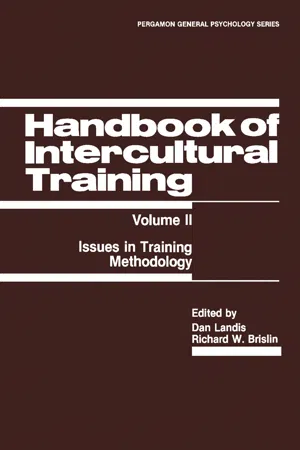Technology & Engineering
Situational Factors
Situational factors refer to the external conditions that can affect the performance of a technology or engineering system. These factors can include environmental conditions, user behavior, and system interactions with other technologies. Understanding situational factors is important for designing and optimizing technology and engineering systems.
Written by Perlego with AI-assistance
Related key terms
1 of 5
3 Key excerpts on "Situational Factors"
- Fausto Pedro García Márquez(Author)
- 2020(Publication Date)
- IntechOpen(Publisher)
The better your social system is integrated with the new technological system, the better results you achieve [14]. The basis for sustain-able performance, which is the main objective of firms, is when social system is correctly integrated with the new technological system [24], and thus it will enable to rebrand yourself by reengineering the business [12]. Application of Decision Science in Business and Management 58 2.3 Decision-making environment Managers are required to take risks and make daring decisions more often than before, and this is because nowadays, there is a rapid increase in technological changes as we are uncertain about these changes [28, 29]. This change has made problems for organizations. This scenario requires wise decisions that have minimal cognitive biases in them, and having a decision-making environment helps it [28]. There are a set of factors (bases) of any decision-making environment which includes the level of education, synergy, the capacity to analyze, and available information and resources, and they tell how efficient and effective the decision a manager will make [29]. Barney [30] argues that you can say that when you are deciding, the sum of internal and external factors needs to be considered. The fac-tors such as people, organizational units, and other factors are classified as internal, while customers, suppliers, competitors, sociopolitical factors, and technological developments all are external factors [8, 31]. To make improved decisions, the physical variables and the socioeconomic ones require a close interaction for a better decision-making environment [29, 32]. Decision-makers must have the idea about all decision-making environment components like its effects, issues related socially, nature of decision made, and information processing [32, 33]. This increases the importance of environmental components for making efficient decisions [31].- eBook - PDF
Handbook of Intercultural Training
Issues in Training Methodology
- Dan Landis, Richard W. Brislin, Dan Landis, Richard W. Brislin(Authors)
- 2013(Publication Date)
- Pergamon(Publisher)
Situational Factors A situational factor is any variable outside of an individual which may influence behavior, thoughts, or feelings. As previously noted, situations have been found to influence behavior dramatically. It is asserted here than an understanding of situational influences is absolutely essential for the interculturalist: intercultural situations are characterized not by changes in the personality of the person (though this may result from the experience) but by changes in the situation. The language, behavior, body language, attitudes, climate, geography, responses to authority, and so on, of another culture all serve as situational influences on the individual. A new cultural experience is defined as an experience of new situational influences. When Hall (1959) describes the removal or distortion of many of the familiar cues (p. 156), he is in fact talking about changes in situational variables. In what ways do situations differ? As has been noted (Jones, 1979; Brislin, 1981), we face a problem when we try to answer this question. The difficulty is that we do not have an agreed-upon set of terms that we can use to describe situations. This contrasts sharply with the personality field where many such descriptive terms exist—words such as sociable, aggressive, and independent are generally meaningful person descriptors. Existing attempts to assess situational differences systematically have taken two basic forms. The first is the use of a taxonomic method to generate lists of all possible types of situations. The second has grown from observations of cultural differences or cultural adjust-ment problems. Situation Types A good example of this approach is that taken by Forgas (1976). He had subjects give a detailed account of their interactions during a 24-hour period, and also list all recurring activities that did not occur during that time. - Kenan Dikilita?, Carol Griffiths, Kenan Dikilita?, Kenan Dikilita?, Kenan Dikilita?, Kenan Dikilitaş(Authors)
- 2017(Publication Date)
- Palgrave Macmillan(Publisher)
Things This category might include the physical conditions of school build- ings and classrooms, furniture (desks, seating, etc.), labs, technological facilities, Internet access opportunities, availability of teaching/learning materials (textbooks, etc.), and access to libraries and online materials. A setting equipped with such facilities could enhance motivation and learn- ing opportunities and one deprived of these could impact the quality of learning and teaching. Places, people, programmes, and things are interrelated elements that need to be considered as a whole which makes up an organiza- tional system. These are also specific factors that give readers a general view of the research setting. In fact, specific details about the setting are the elements that shape the findings of research or are the underly- ing causes of why results (high or low scores, particular themes about experiences, beliefs and opinions) are the way they are. The constraints or conditions may also help researchers interpret some findings. For example, two of the mentors of action research in Dikilitaş and Wyatt (2017) found one of the recurrent themes to be providing psychologi- cal support for action researchers. They agreed that Situational Factors such as teaching overload, no allowance of specific time for engage- ment in research, lack of background knowledge, and lack of incentives and funding for doing research could be factors contributing to the need for such support. In the same study another mentor experienced difficulty in creating sustainability and motivation. When the situa- tion was examined, the teacher-researcher project was found to be a top-down decision which made it compulsory for all the instructors. In these cases, the situational constraints shaped mentoring strategies and practices in different ways. The Situational Factors might therefore serve as explanations for particular behaviours, preferences, strategies, and practices. 4 Thinking About the Context...
Index pages curate the most relevant extracts from our library of academic textbooks. They’ve been created using an in-house natural language model (NLM), each adding context and meaning to key research topics.


